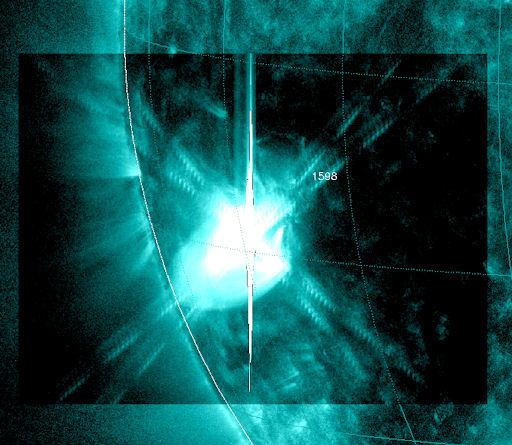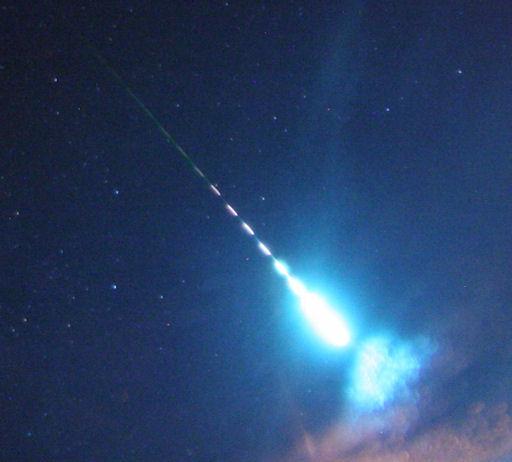X-FLARE: New sunspot AR1598 has erupted again. On Oct. 23rd at 0322 UT, Earth orbiting satellites detected a strong X1-class solar flare. NASA's Solar Dynamics Observatory recorded the extreme ultraviolet flash:
Radiation from the flare created waves of ionization in the upper atmosphere over Asia and Australia (the daylit side of Earth) and possibly HF radio blackouts at high latitudes. The blast did not, however, produce a significant coronal mass ejection (CME). No auroras are expected to result from this event.
This is the 4th significant flare from AR1598 since it emerged over the southeastern limb only three days ago. This means more flares are probably in the offing, and they will become increasingly Earth-directed as the sunspot turns toward our planet in the days ahead. Stay tuned for updates. Solar flare alerts: text, voice.
Realtime Space Weather Photo Gallery
ORIONID METEOR UPDATE: Most observers would say that the 2012 Orionid meteor shower was underwhelming. Even during the peak on Oct 21st meteor rates never climbed much above 20 per hour. Sometimes, however, one is enough:
"This was a very bright Orionid fireball," says photographer Maciek Myszkiewicz. "It was brighter than the full Moon."
Orionid meteors are pieces of Halley's Comet, which has left behind a stream of dusty debris in the inner solar system. Earth hits the stream twice a year producing a pair of meteor showers, the eta Aquarids in May and the Orionids in October. According to international meteor counts, Earth is still in the outskirts of the Orionid portion of the stream. Enthusiasts should therefore remain alert for pieces of Halley's Comet in the pre-dawn sky until further notice. [gallery] [video] [meteor radar]

![]()
Solar wind
speed: 368.7 km/sec
density: 1.6 protons/cm3
explanation | more data
Updated: Today at 1616 UT
![]()
X-ray Solar Flares
6-hr max: C3 1048 UT Oct23
24-hr: X1 0322 UT Oct23
explanation | more data
Updated: Today at: 1559 UT
![]()
![]()
![]()
Daily Sun: 23 Oct 12
![]()
![]()
Sunspot 1598 poses a threat for strong X-class solar flares. Credit: SDO/HMI
![]()
![]()
![]()
Sunspot number: 86
What is the sunspot number?
Updated 23 Oct 2012
Spotless Days
Current Stretch: 0 days
2012 total: 0 days (0%)
2011 total: 2 days (<1%)
2010 total: 51 days (14%)
2009 total: 260 days (71%)
Since 2004: 821 days
Typical Solar Min: 486 days
Update 23 Oct 2012
The Radio Sun
10.7 cm flux: 144 sfu
explanation | more data
Updated 23 Oct 2012
![]()
![]()
![]()
Current Auroral Oval:
![]()
Switch to: Europe, USA, New Zealand, Antarctica
Credit: NOAA/POES
![]()
![]()
![]()
Planetary K-index
Now: Kp= 2 quiet
24-hr max: Kp= 2 quiet
explanation | more data
![]()
Interplanetary Mag. Field
Btotal: 4.0 nT
Bz: 2.8 nT south
explanation | more data
Updated: Today at 1614 UT
![]()
![]()
![]()
Coronal Holes: 23 Oct 12
![]()
![]()
There are no large coronal holes on the Earthside of the sun. Credit: SDO/AIA






